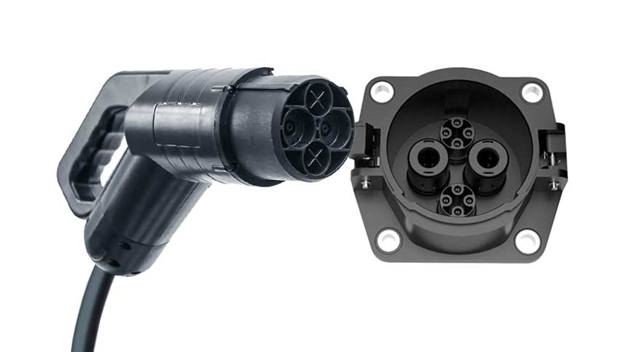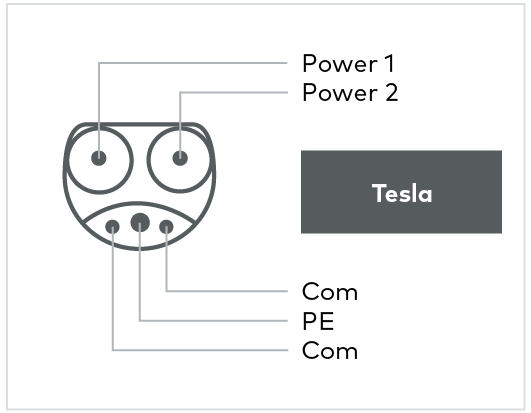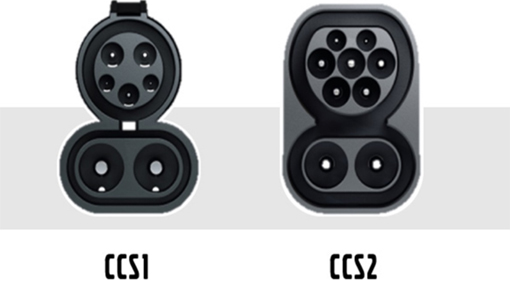Charging protocols and safety standards for EV charging infrastructure
Introduction
The increasing adoption of EVs has made policymakers across the globe realize the need for greater availability of charging Infrastructure. However, chargers lack standardization, and the absence of non-standardized EV charging stations may lead to EVs being stranded on their journeys. There is thus a pressing need for new industry protocols related to interoperability. Standardizing charging Infrastructure will help EV charger manufacturers avoid the risk of stranded assets and foster the sharing of development costs. It will also ensure that EV users enjoy a convenient recharging solution worldwide by avoiding an assortment of different cables and adaptors and retrofitting costs for adapting to new charging systems. This article discusses the various charging protocols and safety standards for EV charging Infrastructure, which will be a crucial enabler of future EV charging infrastructure developments.
Charging protocols for EV charging
The most common protocols for EV charging are as follows:
- CHArge de MOve (CHAdeMO) protocol: The CHAdeMO standard defines DC charging protocols related to EVs, ensuring smooth communication between charging stations and vehicles. The CHAdeMO charging protocol accommodates a power range from 6 kW to 400 kW. It focuses on safety, compatibility, ease of use, and uniformity. Technical specifications of the CHAdeMO protocol encompass battery protection, secure charging control, electric shock prevention, and connector interlock mechanisms. As the inaugural global DC fast-charging protocol for EVs, CHAdeMO addresses range anxiety. The CHAdeMO Association is the governing body responsible for formulating and updating CHAdeMO protocols in response to diverse market requirements. The initial protocol, CHAdeMO 0.9, introduced fundamental charging features. Subsequently, it evolved to CHAdeMO 1.0 in 2012, incorporating additional protective and compatibility features. Future developments include the introduction of smart charging through charging power modulation. To accommodate this, the older protocol transitioned to version 1.1 in 2015, incorporating dynamic current control. In 2017, an updated version, 1.2, was released, featuring market-demanded attributes such as high-power charging capabilities (200 kW), enhanced protection and coordination, and ground fault detection. The subsequent iteration, released as Version 2.0 in 2018, increased the high-power charging capacity to 400 kW while introducing plug-and-charge functionality.

Figure 1: CHArge de MOve (CHAdeMO) cable and socket
- North American Charging Standard (NACS): It serves as Tesla's proprietary EV charging connector system, first introduced with the innovative 2012 Tesla Model S. This charging standard has been consistently employed across Tesla's subsequent EV models, encompassing the Model X and Model Y crossover SUVs. Designed with safety in mind, NACS incorporates mechanisms to minimize heat generation during the charging process, mitigating the risk of overheating. NACS accommodates both AC charging and DC fast charging. Presently, efforts are underway to standardize NACS through the SAE J3400 designation. The NACS connector is equipped with five pins, with its primary pins being the DC+/L1 and DC+/L2, serving both AC and DC fast charging. The remaining three pins fulfill distinct functions. The Ground (G) pin discharges excess charge into the road surface, connecting the EV to the ground.
- The other two secondary pins gauge the isolation level of the vehicle's electrical systems by comparing their signals with the G pin. The Control Pilot (CP) pin creates a digital communication line between the EV's computer and the charging system, following international standards for EV conductive charging. The CP pin transmits signals indicating the charging state and current, with additional responsibility for power line communication in DC charging mode. The Proximity Pilot (PP) pin carries a signal that monitors the EV connector's status. Pressing the control button on the plug initiates the unlocking process, causing the proximity pilot circuit switch to open, cutting off the power supply. Depending on the configuration, the NACS system delivers varying voltage and amperage. In AC charging mode, it operates at 277 volts, providing a maximum of 80 amps. NACS can reach up to 500 volts and 500 amps for DC fast charging. Residential charging stations may configure their NACS differently, providing up to 48 amps of current at 240 volts. The NACS connector features a control button on its handle top, facilitating easy use. Pressing the button sends a UHF signal to the charging station, triggering a process based on the connector's lock status. If locked, the EV retracts the latch, allowing the connector to move during charging. Conversely, the vehicle opens the hatch with an unlocked connector, covering the charging inlet.

Figure 2: Tesla supercharger pinout
- Combined Charging System (CCS): The CCS is a rapid charging standard for EVs. This standard was collaboratively developed by a consortium of automakers, including BMW, Mercedes-Benz, Ford, General Motors, Porsche, and Volkswagen. CCS seamlessly integrates AC and DC charging functionalities into a single plug, promoting increased flexibility and compatibility across various vehicles.
Two CCS designs, namely CCS1 and CCS2, are depicted in Figure 3. CCS1 combines type 1/SAE J1772 and DC ports, while CCS2 combines type 2/Mennekes and DC ports. Both CCS connectors adhere to SAE J1772 and IEC 62196 protocols for charging purposes. They are country-specific, with North America, Central America, Taiwan, and Korea utilizing the CCS1 connector and CCS2 employed in South America, Arabia, Australia, and other countries. CCS adheres to the SAE J1772 signaling and communication protocol and utilizes the HomePlug Green PHY power line communication protocol. Charging protocols defined by ISO/IEC 15118 are applied for DC and AC charging communication. The CCS charging process is structured into seven layers, progressing from the physical to the application layers. The charging process also begins with communication between the vehicle and the charging station to verify compatibility and preparedness for the charging session. Once the connection is established, the charger transmits DC power to the car. The vehicle's power electronics transform this DC power into the voltage and current. The vehicle's battery management system governs the charging rate, ensuring a safe and efficient charging process.
Figure 3: Combined charging system (CCS) connectors
- SAE J1772 charging standard: The SAE J1772 is a prominent charging standard for EVs, particularly in North America and Japan. The J1772 connector has become a standard choice for many automakers in their EV designs by offering a dependable, secure, and efficient charging interface. Except for Tesla charging stations, the J1772 plug is utilized in all Level 1 and Level 2 charging stations across North America. It features five pins and can deliver up to 80 amps with a 240-volt input, showcasing impressive power output capabilities. This charging solution caters to Level 1 and Level 2 EV chargers utilizing single-phase AC charging. However, it's worth noting that the Type 1 connector lacks an automatic locking mechanism, making it comparatively less secure than the Type 2 connector prevalent in Europe. Given its widespread acceptance as the standard, most EV models designed for the North American market come equipped with a built-in J1772-compliant inlet, allowing seamless connection to any charging station using the J1772 connector. While using a proprietary charging port, Tesla vehicles include a J1772 adapter with each delivery, enabling compatibility with most North American EV charging stations.
Safety standards of EV charging station
Safety is of paramount importance in EV charging Infrastructure. EVs are intricate systems dealing with high-voltage electricity, and any lapse in safety measures can result in severe consequences. Charging stations must be constructed and maintained as per appropriate safety standards. Some essential aspects of electrical safety are:
- Functional safety: Functional safety relates to safeguarding individuals from the hazards posed by the movement of live components within a circuit and the accompanying potential fire risks. UL2202 and UL Subject 2594 stipulate that components generating arcs or sparks for the North American market should be positioned at least 457mm above the floor.
- Individuals’ safety: To mitigate the risk of electric shocks during EVSE use, it is crucial to adhere to IEC standards. According to these standards, the leakage current of the device must not exceed 30mA. It is essential to incorporate an appropriate insulation class to reduce the risk of insulation failure. This selection should consider factors such as voltage stress and environmental pollution. Maintaining a safe distance between two conductive materials is necessary, as a certain distance ensures protection from impulse voltage. The determination of this distance is based on the RMS value of voltages.
- Electromagnetic compatibility: EMC or electromagnetic compatibility is a crucial design aspect, particularly when dealing with numerous EMI-generating components in high-speed DC fast chargers. The electronic circuits in these chargers operate at high power, generating sensitive signals that rely on their integrity for accurate functionality. EMI can corrupt or disrupt these signals, leading to disturbances in circuit performance and outputs. Furthermore, the noise produced can extend beyond the confines of the EV chargers, affecting nearby facilities and equipment. Additionally, EVs generate a substantial magnetic field through their batteries, motors, and power circuits, which can influence the fast charger. Conversely, the charger can impact the EV's magnetic field. In induction charging cases, onboard power conversion electronics generate noise. Safety standards thus must include protection from electrostatic discharge, electromagnetic disturbance, and voltage surges. Such safeguards ensure the reliable and secure operation of high-speed DC fast chargers in the presence of these electromagnetic challenges.
EV charging can be managed by several methods, and the chosen technique depends on the goals set by a cooperative. This underscores the significance of EVSE charging controllers in achieving efficient and cost-effective charging. Controllers are electronic devices that regulate the flow of electricity between the charging station and the EV's battery, ensuring that the battery charges at the appropriate voltage and current, preventing overcharging and undercharging. High-capacity EV batteries can be charged most efficiently only when a suitable EV charging controller is used. The control pilot pin within EV chargers transmits the charging and discharging signals from the EVSE to the EV. Consistently monitoring the signal on the control pilot pin is a crucial safety measure during both charging and discharging processes. A tolerance range of +2% and -2% ensures safety in these operations, maintaining a margin to safeguard against potential deviations during charging and discharging.
The IEC 61851 standard maintains all the safety necessities associated with EVSE. The globally accepted safety standards for EVSE available in the IEC 61851 standard are as follows:
| Certifications | Applications |
|---|---|
| IEC 61851-1 | This standard covers the general requirements for charging electric vehicles, including safety considerations. |
| IEC 61851-21 | This standard specifically covers AC charging for electric vehicles and includes requirements for safety and compatibility with different vehicle types. |
| IEC 61851-22 | This standard covers the requirements for a.c. Electric vehicle charging stations for conductive connection to an electric vehicle, with a.c. Supply voltages according to IEC 60038 up to 690 V. |
| IEC 61851-23 | This standard covers DC charging for electric vehicles and includes safety, compatibility, and communication requirements between the charger and the car. |
| IEC 61851-24 | Together with IEC 61851-23, this standard applies to digital communication between a DC EV supply equipment and an electric road vehicle (EV) for control of conductive DC power transfer, with a rated supply voltage of up to 1 000 V AC or up to 1 500 V DC and a rated output voltage up to 1 500 V DC. |
In addition to the above standards, charging stations must comply with NFPA 70E, a workplace electrical safety standard. The safety regulations specific to EVSE are outlined in the Automotive Industry Standards (AIS). These standards are bifurcated into two parts, addressing safety aspects for both AC and DC EVSE. Both are detailed in the following standards:
(i) AIS 138 (Part 1): Electric Vehicles Conductive AC Charging System (AIS, 2017).
(ii) AIS 138 (Part 2): Electric Vehicle Conductive DC Charging System (AIS, 2018).
Conclusion
As the EV market undergoes continuous growth, standardization in charging Infrastructure becomes essential for interoperability and prioritizing the safety of EVSE. By incorporating the most effective safety standards and practices in EVSE and related equipment design, we can establish a resilient and secure charging infrastructure that promotes the widespread acceptance of EVs. Farnell provides hardware solutions associated with robust Electric Vehicle Charging Systems (EVCSs), enhancing their safety and interoperability across various models of EVs.
Stay informed
Keep up to date on the latest information and exclusive offers!
Subscribe now
Thanks for subscribing
Well done! You are now part of an elite group who receive the latest info on products, technologies and applications straight to your inbox.
Related Article
- Charging protocols and safety standards for EV Charging Infrastructures
- The Future of EV Infrastructure: Navigating trends, opportunities, and benefits
- A Developer's Guide for designing the EV Charging using the right tool
- Revolutionizing Electric Vehicles - Innovations in Motor Control Systems
- How to implement Smart Metering in EV charging
- How to design an efficient power conversion circuit for EV Chargers
- Transforming Mobility: The Architecture and Solutions of V2X Communication in Electric Vehicles
- The effects of electric vehicle charging stations to the power grid
- Cyber security of public charging stations
- Powering Up with Safety and Ease: The Art of EV Charger Design
- EV Charging Standards: Ensuring Compatibility and Safety in the Charging Process
- EV charging and renewable energy for sustainable transportation
- EV Charging and Battery Management System
- Wireless Power Transfer: A Convenient and Efficient Solution for EV Charging
- Design Considerations for High-Efficiency EV Chargers
- The benefits and challenges of electric vehicles
- Communication network for electric vehicle charging
- How to boost Level-3 EV charging with the right connectivity
- How SPI isolated communication helps BMS in EVs








